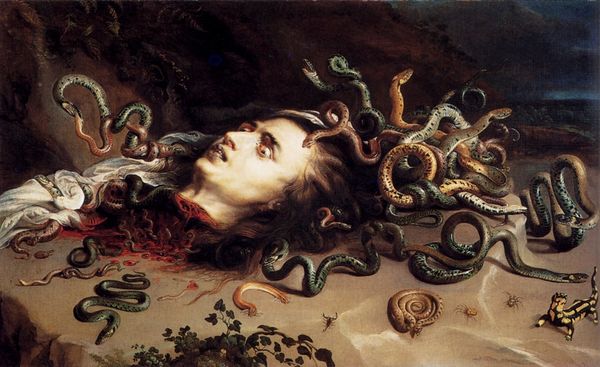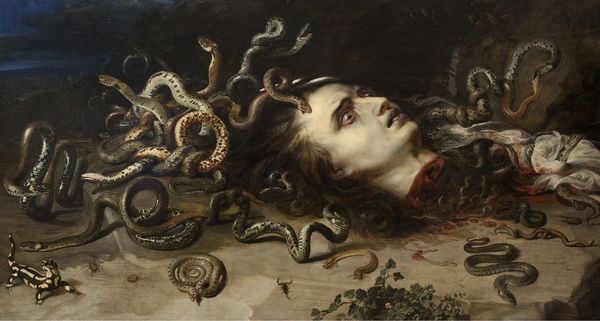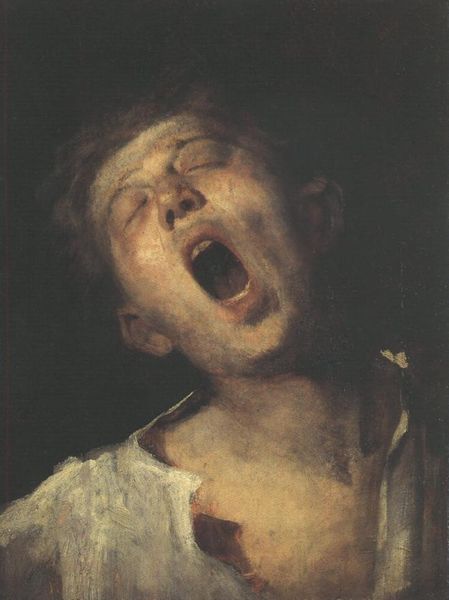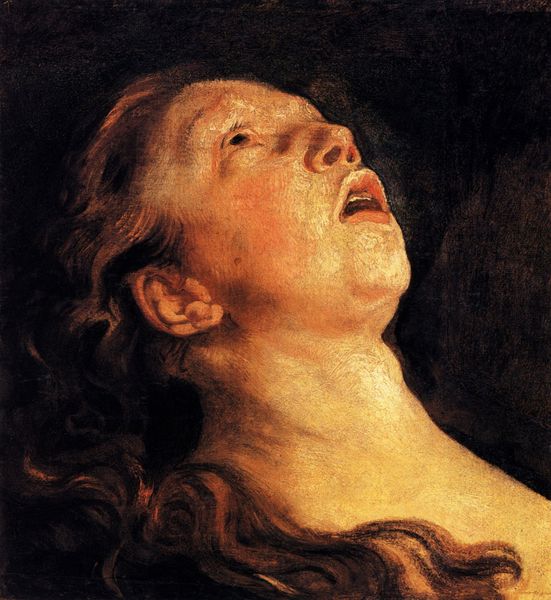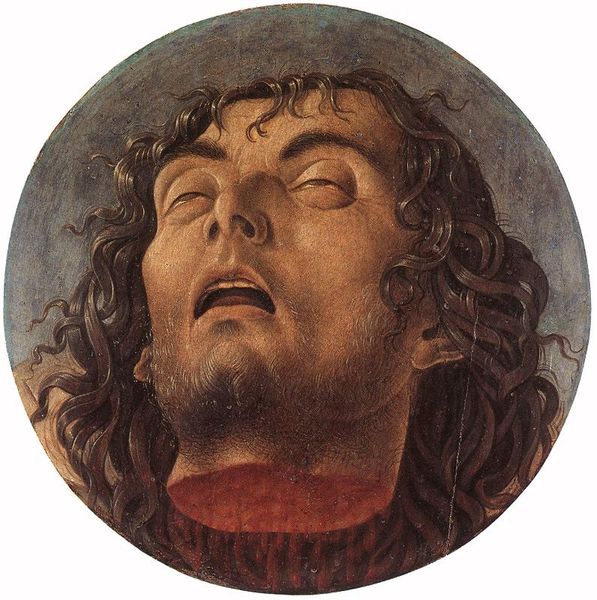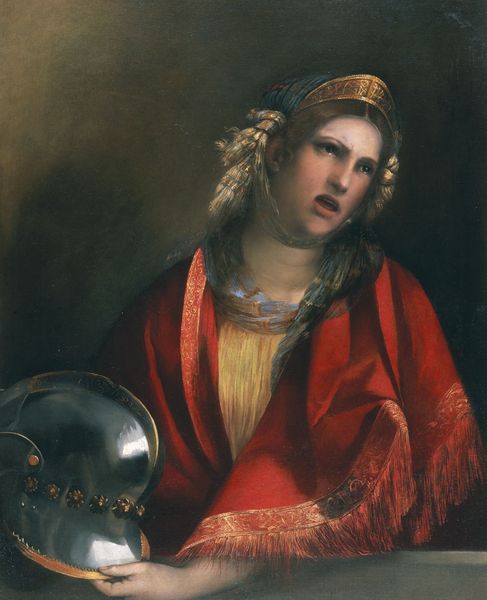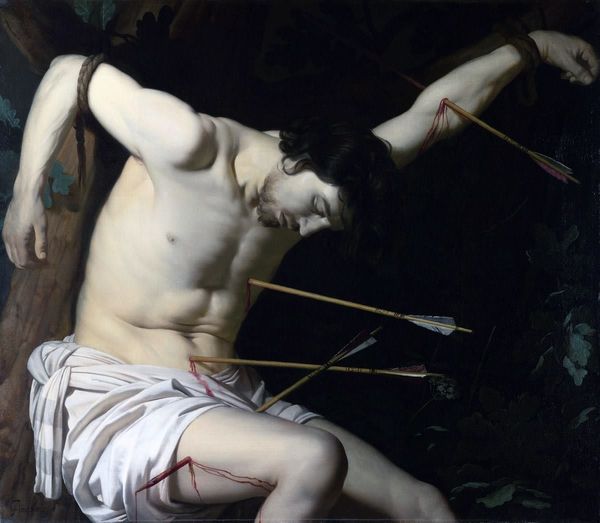
painting, oil-paint
#
portrait
#
allegory
#
baroque
#
painting
#
oil-paint
#
mythology
#
history-painting
Copyright: Public Domain: Artvee
Caravaggio is one of the most celebrated artists of the Italian Baroque, but did you know that he lived a life almost as intense as his paintings? The artist was arrested several times, was wounded in knife attacks, and fled Rome in 1606 after killing a man in a swordfight. The theme of violence is common in Caravaggio’s paintings. He completed two versions of this painting, both depicting the severed head of the Gorgon Medusa. According to Greek mythology, Gorgons were female monsters with snakes for hair, who could transform their enemies to stone with a single look. Alongside his Medusas, Caravaggio created various paintings on the subject of beheading. Take a look at Judith Beheading Holofernes (c.1598-1599) or Caravaggio’s final painting, David with the Head of Goliath (1610). Why was Caravaggio so fascinated with this narrative? You might notice the unconventional shape of this painting. Why is the canvas circular rather than rectangular? It is believed that this version of Medusa was commissioned as a ceremonial shield for Italian aristocracy. As Medusa was killed by the celebrated Greek hero (and demigod!) Perseus, her portrait evokes the triumph of good over evil. Thus, the shield would symbolise the legendary bravery of classical mythology. In this painting, Medusa is still conscious; her mouth is agape, and her eyes are wide with pain. Caravaggio depicts the final moment of Medusa’s life for visceral and emotional impact. He uses the technique of tenebrism, a dramatic emphasis on bold contrasts of light and shadow. Zoom into the coiled serpents in Medusa’s hair. Do you see the spotlight effects where Caravaggio has combined light and dark? The artist has also built up many layers of oil for a depth of colour. This enabled the fine detail and three-dimensionality of the painting, as can be noticed in the contours of Medusa’s cheek. Caravaggio has prioritised dramatic violence and striking realism in Medusa. This distinguishes his vivid Baroque style from the idealism of the Italian Renaissance. He merges naturalistic detail with classical mythology, creating an arresting image that still holds the power to shock and disturb viewers. Ouch! 🗡️🩸 Editor: Lucy Jude Grantham
Comments
No comments
Be the first to comment and join the conversation on the ultimate creative platform.
